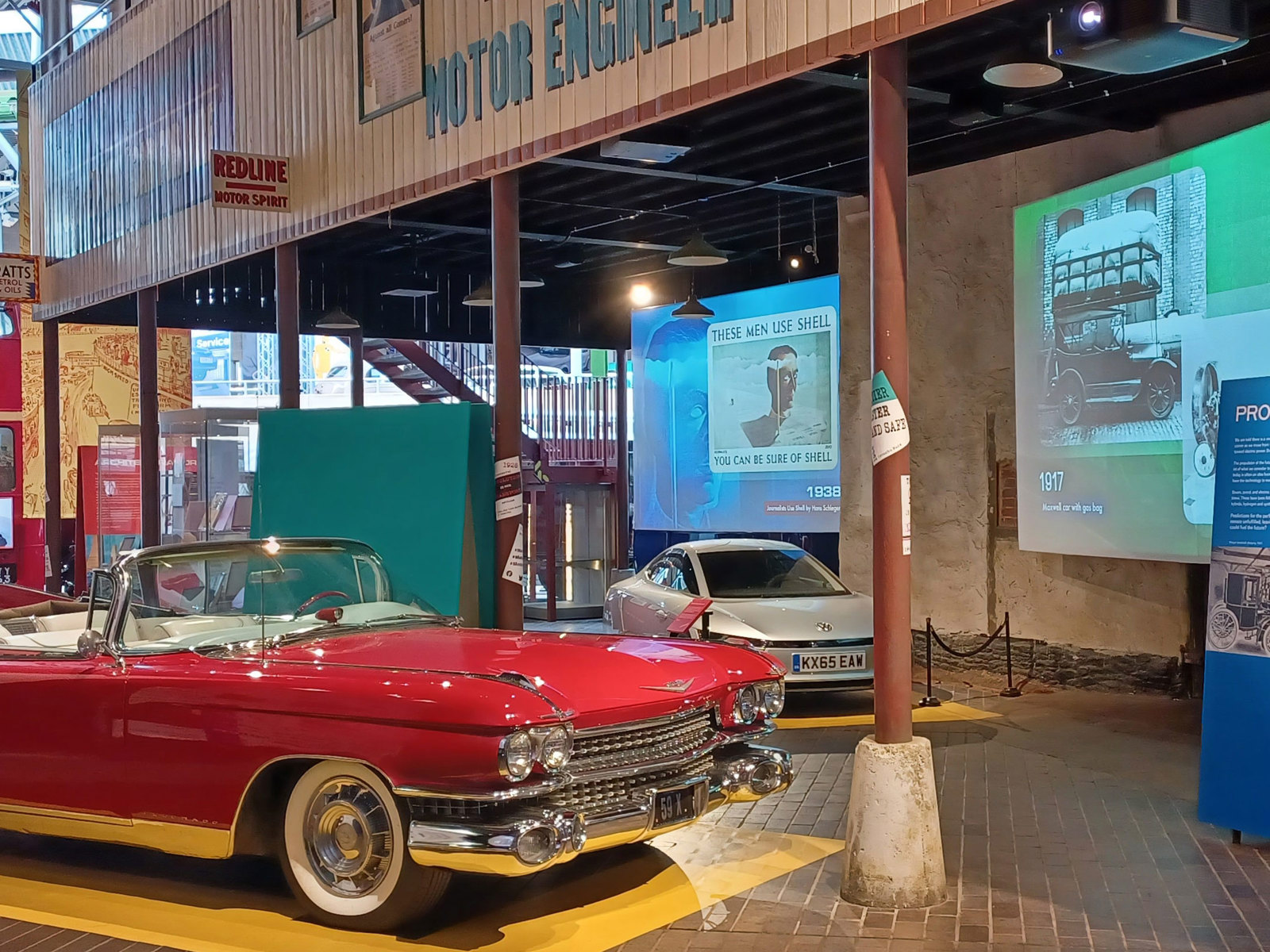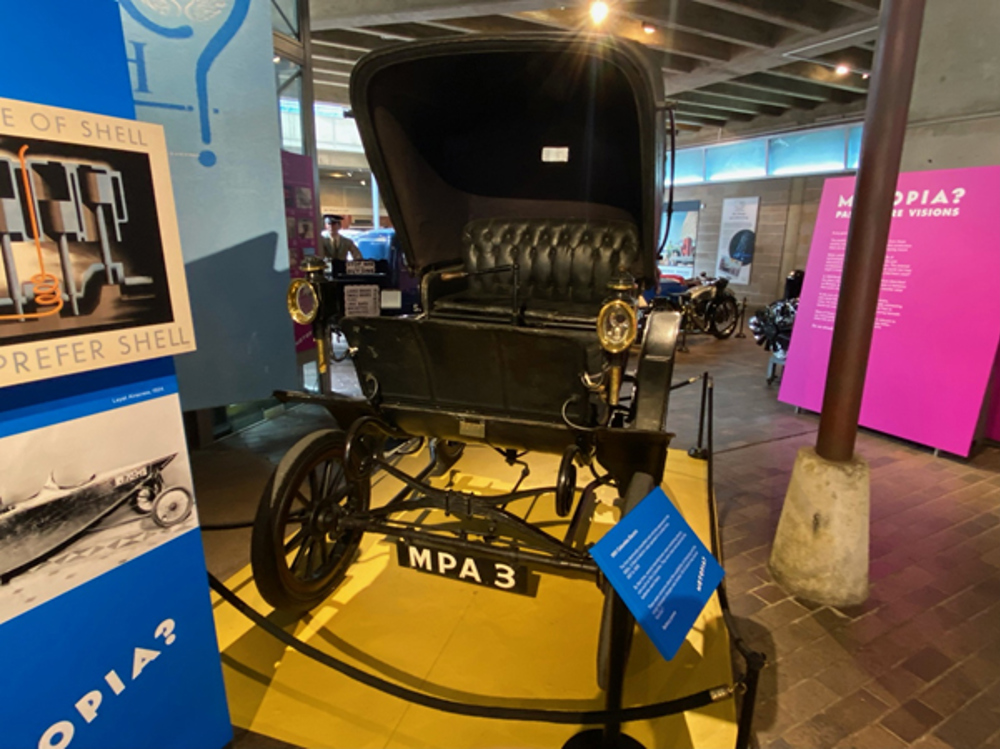
Origins of Electric Vehicles
04 December 2023
Electric vehicles are not new. National Motor Museum Volunteer Seth Burgess says few people realise that electric cars have been around since the start of the 20th century.
We are told there is a revolution in propulsion around the corner as we move from the internal combustion engine toward electric power. But is this really a revolution? For example in the Motopia? Past Future Visions exhibition is a Columbia Electric (1901). Although only reaching 20mph. It was used regularly during the 1930s by RGJ Nash due to the petrol rations.
The title “Inventor of the Electric Vehicle” can be attributed to many great minds during the nineteenth century. Parallel to the invention of the first combustion engine automobile was the electric battery. As such, it was developed over many decades by various engineers and physicists before manufacturing on an industrial scale began in the late nineteenth century. Designs for an electric vehicle go as far back as Benjamin Franklin. It was Hungarian physicist and priest, Ányos Jedlik who invented a primitive electric motor and used a small model car to display its capabilities in 1828. The first electric carriage was invented around a decade later by Scottish inventor, Robert Anderson. Using non-rechargeable cells, Professor Sibrandus Stratingth and assistant Christopher Becker invented a small-scale electric car in 1935.

It wasn’t until rechargeable batteries were invented in 1859 that electric vehicles became a legitimate power option. In 1880 Gustave Trouvé improved upon the lead-acid battery and fitted it to a James Starley tricycle, thus creating the first rechargeable electric vehicle. The strides made with the electric motor contributed greatly to the advancement in electric trams, boats and locomotives as well.
By the early twentieth century the EV had been widely introduced to the public in both Europe and the United States. In London, Walter Bersey designed a fleet of electric cabs nicknamed “Hummingbirds” due to the unique sound they made. EVs achieved most of their success in cities as they were less hampered by their limited range. They were popular for their quietness, lack of smell, vibrations as well as not requiring manual gears of a combustion engine or the long start up of a steam engine. A limited amount of charging outlets outside of cities, plus the combustion engine’s range and versatility made it widely more practical and popular than EVs.
That said had we decided to stick with EVs and put as much energy into them in the last century as we had into combustion, would the world of automobiles be better off?
Seth Burgess

Seth is an university history student at Bournemouth. In 2023 he volunteered at Beaulieu, helping with various collections and getting an understanding of how a museum works. This is one of several blog posts to help introduce the Motopia? Past Future Visions exhibition.

Subscribe for updates
Get our latest news and events straight to your inbox.